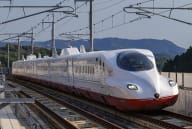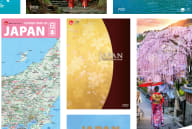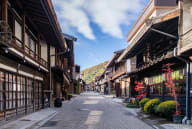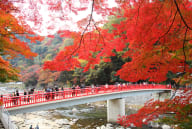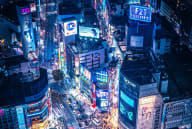
Niigata Savour fresh flavours and the finest grains
A Culinary Journey in Niigata
Niigata Prefecture, nestled along the coast of the Sea of Japan, is a culinary haven shaped by its unique geography and climate. Blessed with abundant snowfall from the nearby mountains and nourished by fertile plains, Niigata boasts ideal conditions for agriculture and seafood production.
Renowned as the "rice capital" of Japan, Niigata produces some of the country's finest rice, including the prized Koshihikari variety, known for its delicate texture and superior flavour. The prefecture's dedication to quality extends to its sake production, where premium rice and pure water from melting snow converge to create exceptional brews revered across Japan.
Niigata's coastline provides an ample bounty of seafood, including delectable specialties like the sweet, meaty snow crabs from the Sea of Japan. The region is also famous for its fresh fish, such as yellowtail and sardines, as well as succulent scallops and shrimp. Niigata's seafood is celebrated for its exceptional quality and flavour, making it a must-try for seafood enthusiasts.
Immerse yourself in Niigata's rich bounty of land and sea, where each dish reflects a harmony of nature's gifts and meticulous craftsmanship.
Hegi soba (Niigata-style soba)

What it is (Ingredients)
Hegi soba is a unique, cut soba (buckwheat noodle) originating from the Uonuma area of Niigata, deeply intertwined with the textile culture of the area. It features Funori, a seaweed traditionally used in textiles, which acts as a binder, imparting a distinctive texture and flavour. The chilled noodles are typically divided into three or four bite-sized portions, presented in a style reminiscent of textile patterns. Traditionally, it is served in a container known as a Hegi.
Please note: If you're uncertain about having a buckwheat allergy, please be cautious when trying soba in Japan. It's important to watch for any symptoms such as itching or swelling. Consulting with a healthcare provider beforehand is a good idea if you have any concerns.
History/Origin
Hegi soba blends the region's rich textile heritage with its deep-rooted soba food culture. Funori, traditionally used in textiles, serves as a binder, enhancing noodle texture and imparting a delicate marine aroma. Unlike soba made solely from wheat flour or 100% buckwheat, Hegi soba boasts a smoother texture.
Where to eat
Hegi soba is available at traditional soba restaurants and local eateries throughout Niigata Prefecture. Dining with Hegi containers adds a distinctive cultural feel, providing a glimpse into Niigata's rich traditions.
When to eat
You can enjoy Hegi soba year-round, but it is particularly refreshing during hot summers when its chilled preparation offers a cool respite from the heat. The light yet satisfying flavours make it a perfect choice for lunch or a light dinner, complemented by its cultural presentation in Hegi containers.
Discover the distinctive flavours and cultural significance of Hegi Soba, a testament to Niigata’s craftsmanship and culinary traditions.
Sasa dango (Sweet dumplings in bamboo leaves)

What it is (Ingredients)
Sasa dango, a delightful traditional treat from Niigata, consists of sweet rice dumplings encased in fresh bamboo leaves. The key ingredients are glutinous rice flour, sweet red bean paste (Anko), and dried mugwort for a hint of herbal aroma. These dumplings are carefully wrapped in Sasa (bamboo) leaves, which impart a unique aroma and enhance their flavour.
History/Origin
Sasa dango originated as an ingenious and delicious way of consuming leftover rice scraps. In earlier times, when sugar and other ingredients were scarce, it was wrapped around homemade side dishes and served as a midday meal during the hectic rice planting season, or as a filling snack. Bamboo leaves were chosen for their preservative properties. Sasa dango stands as a testament to the wisdom passed down through the generations since ancient times.
Where to eat
Sasa dango can be found in local confectioneries, traditional sweet shops, and even some tea houses across Niigata Prefecture. They are often enjoyed during festivals, family gatherings, or as a special treat amidst the serene landscapes of rural Niigata.
When to eat
It is most delicious during the rice planting season in spring and early summer, when mugwort sprouts, and bamboo leaves are at their freshest. It makes a perfect tea-time snack or after-dinner treat. It is also believed that Sasa dango were traditionally eaten during the Boy's Festival (May 5th) to pray for good health. Even today, Sasa dango continues to be enjoyed mainly at the beginning of May.
Savour the nostalgic taste of Sasa dango, a culinary delight that embodies Niigata's rich cultural heritage and culinary craftsmanship.

















































